Abstract
The fate of lymphogranuloma venereum strain Chlamydia-infected HeLa 229 cells was examined by determining the rate of deoxyribonucleic acid synthesis and the kinetics of entry into and progression through S phase and by time-lapse cinemicrography. At an input multiplicity of 5 or less, Chlamydia-infected cells showed no inhibition of host deoxyribonucleic acid synthesis or cell cycle progression. Cinemicrography showed division of inclusion-containing cells, with one or both daughters receiving chlamydial inclusions. Analysis of the family trees indicated that the generation times of infected HeLa 229 were not altered relative to those of the uninfected cells.
Full text
PDF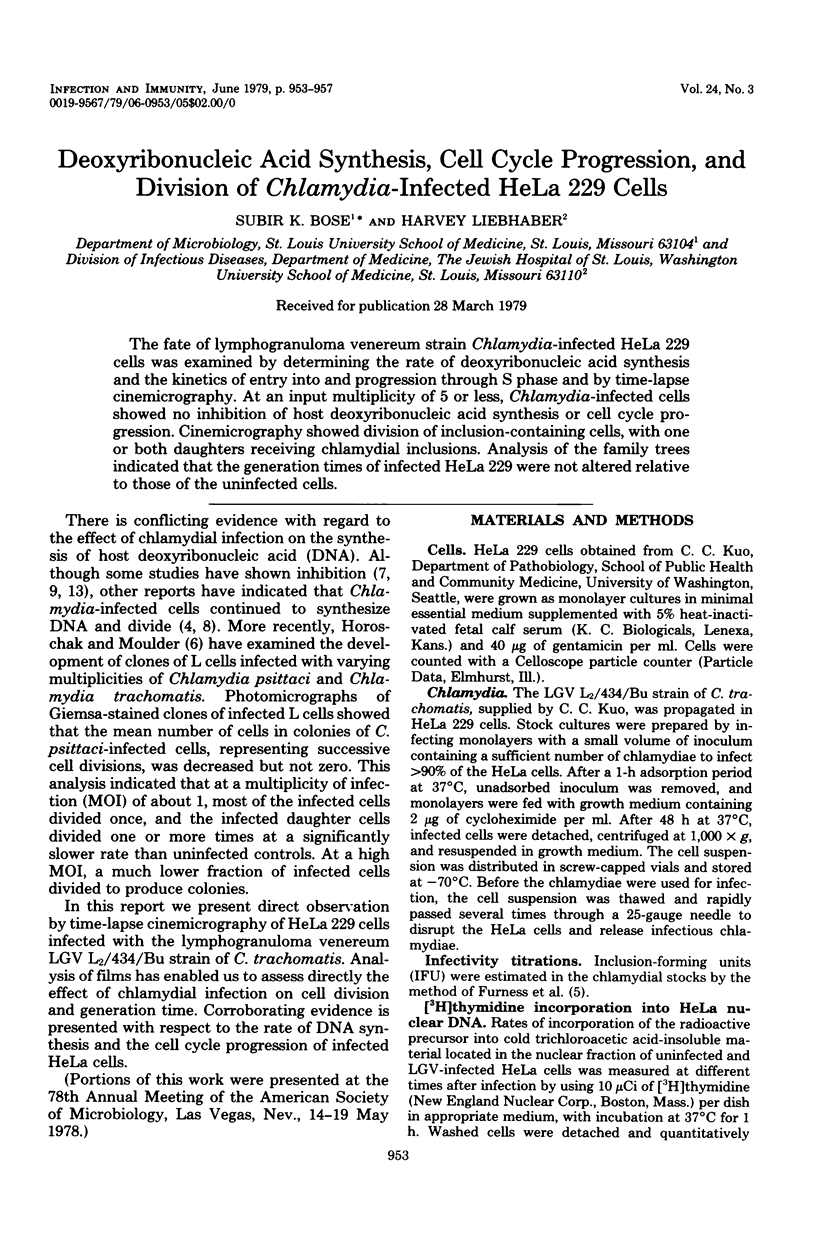
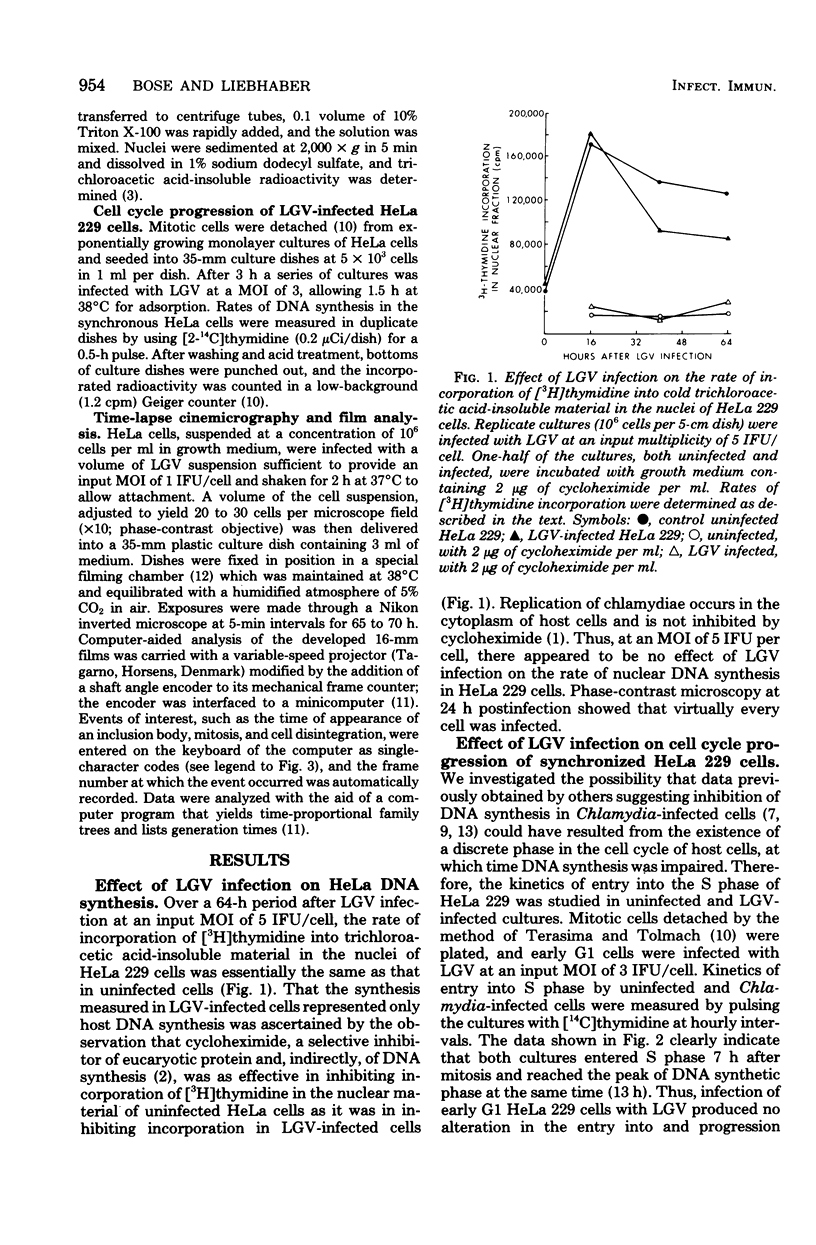
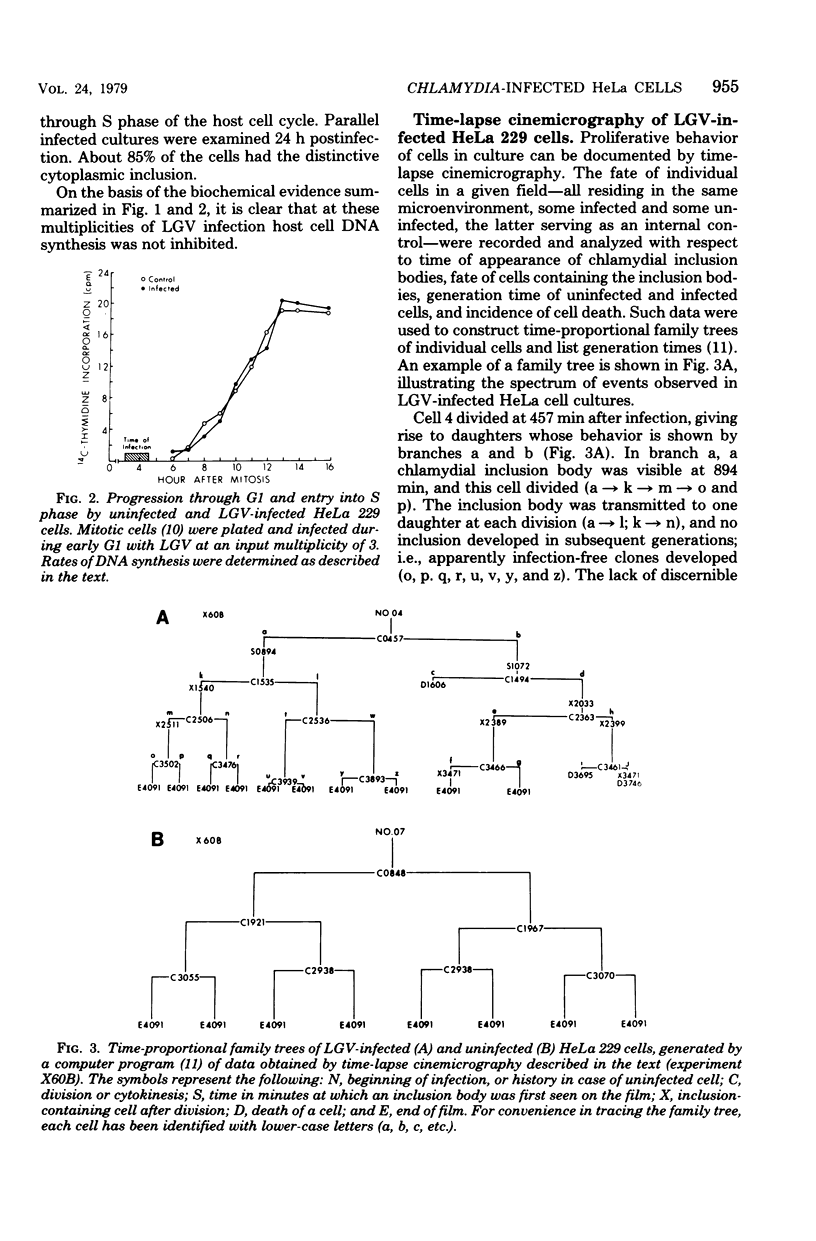
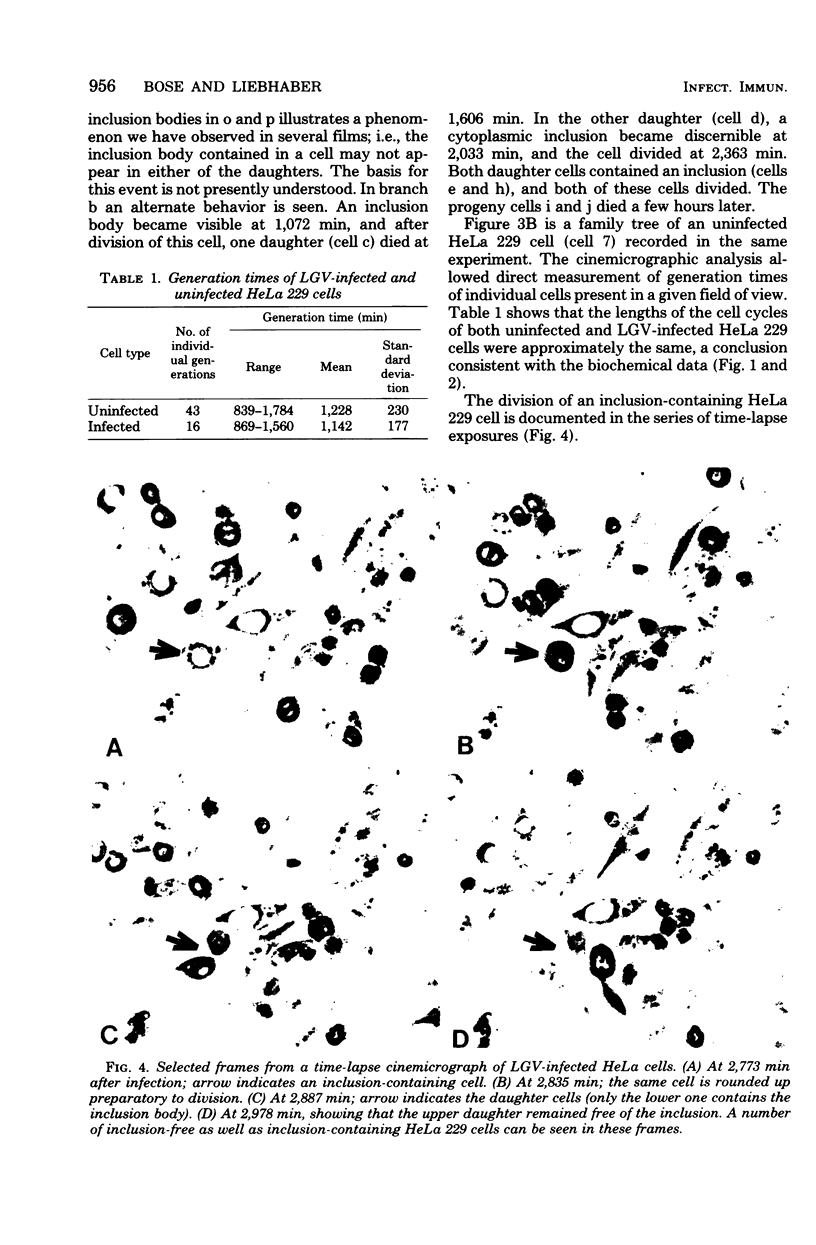
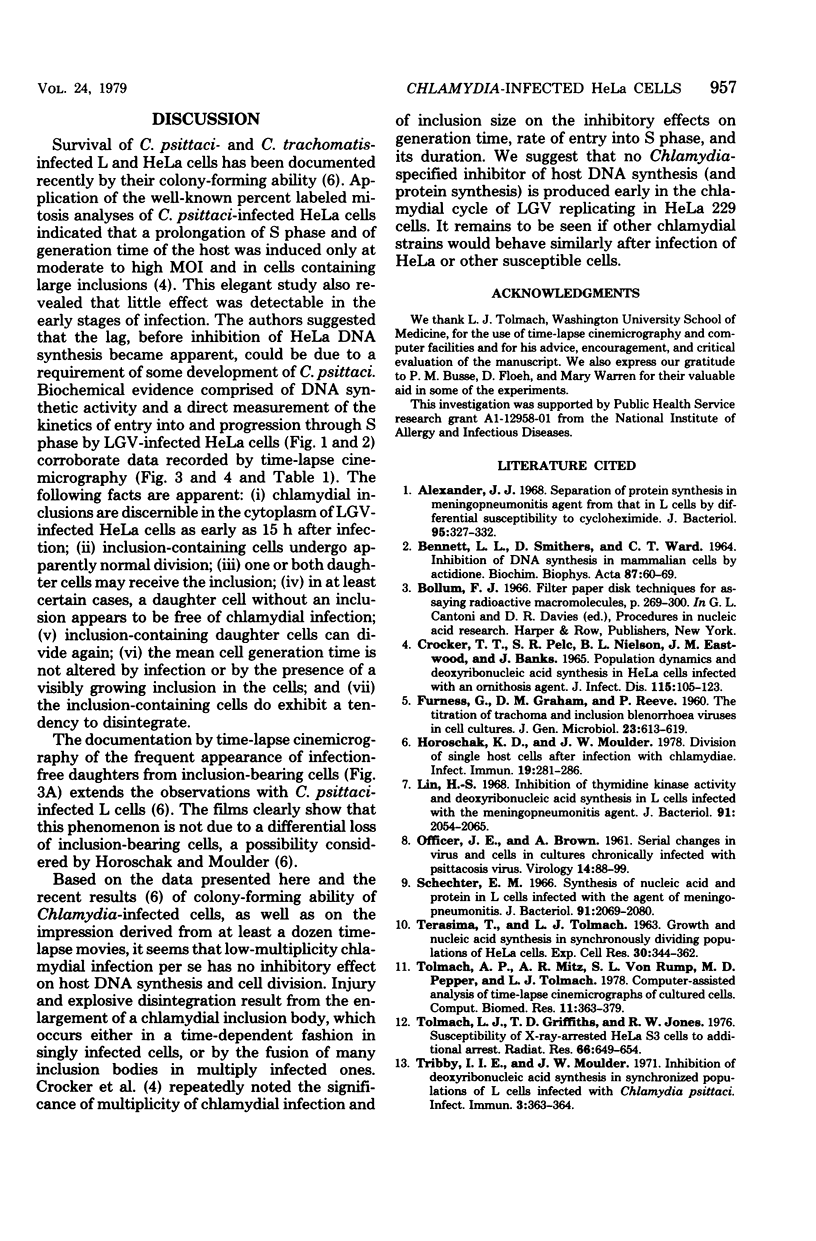
Images in this article
Selected References
These references are in PubMed. This may not be the complete list of references from this article.
- Alexander J. J. Separation of protein synthesis in meningopneumonitisgent from that in L cells by differential susceptibility to cycloheximide. J Bacteriol. 1968 Feb;95(2):327–332. doi: 10.1128/jb.95.2.327-332.1968. [DOI] [PMC free article] [PubMed] [Google Scholar]
- BENNETT L. L., Jr, SMITHERS D., WARD C. T. INHIBITION OF DNA SYNTHESIS IN MAMMALIAN CELLS BY ACTIDIONE. Biochim Biophys Acta. 1964 May 18;87:60–69. doi: 10.1016/0926-6550(64)90047-7. [DOI] [PubMed] [Google Scholar]
- CROCKER T. T., PELC S. R., NIELSEN B. I., EASTWOOD J. M., BANKS J. POPULATION DYNAMICS AND DEOXYRIBONUCLEIC ACID SYNTHESIS IN HELA CELLS INFECTED WITH AN ORNITHOSIS AGENT. J Infect Dis. 1965 Apr;115:105–122. doi: 10.1093/infdis/115.2.105. [DOI] [PubMed] [Google Scholar]
- FURNESS G., GRAHAM D. M., REEVE P. The titration of trachoma and inclusion blennorrhoea viruses in cell cultures. J Gen Microbiol. 1960 Dec;23:613–619. doi: 10.1099/00221287-23-3-613. [DOI] [PubMed] [Google Scholar]
- Horoschak K. D., Moulder J. W. Division of single host cells after infection with chlamydiae. Infect Immun. 1978 Jan;19(1):281–286. doi: 10.1128/iai.19.1.281-286.1978. [DOI] [PMC free article] [PubMed] [Google Scholar]
- Lin H. S. Inhibition of thymidine kinase activity and deoxyribonucleic acid synthesis in L cells infected with the meningopneumonitis agent. J Bacteriol. 1968 Dec;96(6):2054–2065. doi: 10.1128/jb.96.6.2054-2065.1968. [DOI] [PMC free article] [PubMed] [Google Scholar]
- OFFICER J. E., BROWN A. Serial changes in virus and cells in cultures chronically infected with psittacosis virus. Virology. 1961 May;14:88–99. doi: 10.1016/0042-6822(61)90136-2. [DOI] [PubMed] [Google Scholar]
- Schechter E. M. Synthesis of nucleic acid and protein in L cells infected with the agent of meningopneumonitis. J Bacteriol. 1966 May;91(5):2069–2080. doi: 10.1128/jb.91.5.2069-2080.1966. [DOI] [PMC free article] [PubMed] [Google Scholar]
- TERASIMA T., TOLMACH L. J. Growth and nucleic acid synthesis in synchronously dividing populations of HeLa cells. Exp Cell Res. 1963 Apr;30:344–362. doi: 10.1016/0014-4827(63)90306-9. [DOI] [PubMed] [Google Scholar]
- Tolmach A. P., Mitz A. R., Von Rump S. L., Pepper M. L., Tolmach L. J. Computer-assisted analysis of time-lapse cinemicrographs of cultured cells. Comput Biomed Res. 1978 Aug;11(4):363–379. doi: 10.1016/0010-4809(78)90018-6. [DOI] [PubMed] [Google Scholar]
- Tolmach L. J., Griffiths T. D., Jones R. W. Letter: Susceptibility of X-ray-arrested HeLa S3 cells to additional arrest. Radiat Res. 1976 Jun;66(3):649–654. [PubMed] [Google Scholar]
- Tribby I. I., Moulder J. W. Inhibition of Deoxyribonucleic Acid Synthesis in Synchronized Populations of L Cells Infected with Chlamydia psittaci. Infect Immun. 1971 Feb;3(2):363–364. doi: 10.1128/iai.3.2.363-364.1971. [DOI] [PMC free article] [PubMed] [Google Scholar]



